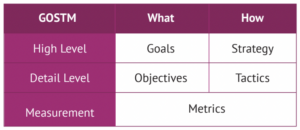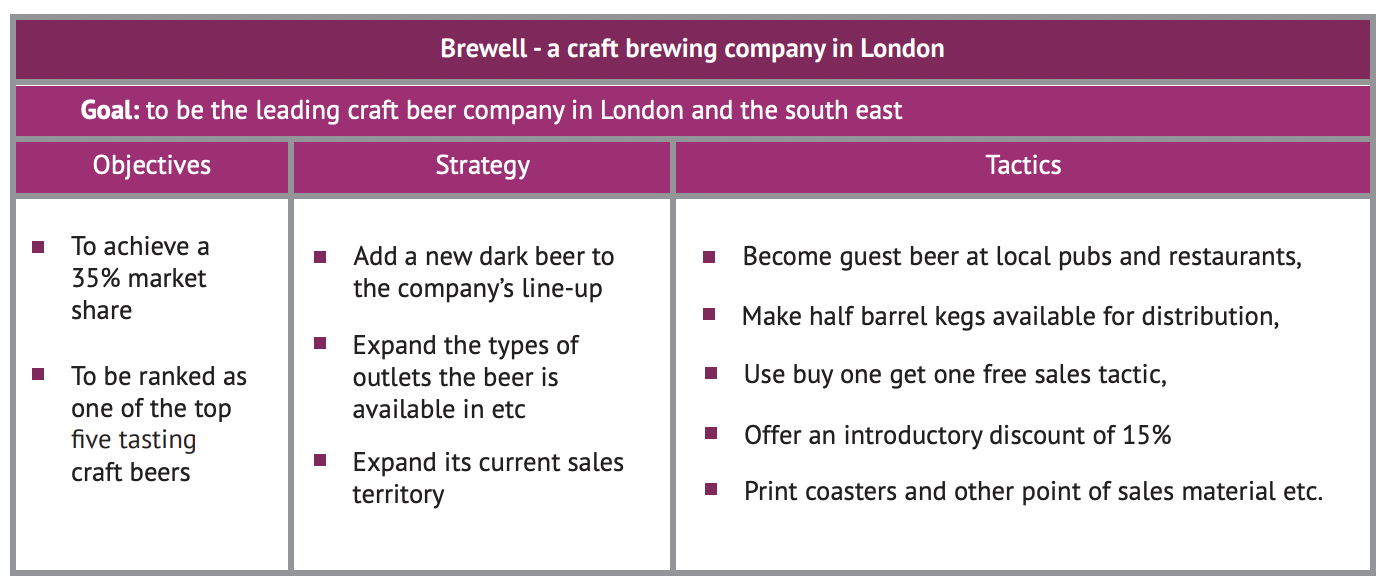The GOSTM Framework
An action plan framework used for strategic planning
-
01
IntroductionEntrepreneurs and business owners are often guilty of implementing their ideas without proper thought to defining clear objectives and setting out strategies to achieve the objective.
Activities carried out without a clear objective and plan in place increase the chance of failure to achieve the desired outcomes.
In order to improve your chance of success be it in starting or growing your business or, undertaking any activity such as sales and marketing, it is important to set a framework that will establish your goals, set objectives and ensure you have developed strategies and set tactics right from the onset.
In order to achieve the desired outcome, it is important you spend time to ‘think, plan and implement’, and a good way of undertaking this is to use the GOSTM model.
Remember your present circumstance and position do not determine where you can go; it merely determines where you start from.
-
02
What is the GOSTM framework?GOSTM is an acronym that stands for Goals, Objectives, Strategy, Tactics and Metrics
It is a very simple and effective way of setting out your desired outcomes (what), actions to achieve them (how) and measurements to assess their success (metrics) in a manner that is clear and unambiguous.
When building your GOSTM model it is important to start from the top with your goal, which is followed by objectives that would lead to the achievement of the goal.
The next step is to determine the strategy which is accompanied by tactics. While goals and objectives are in reference to ‘what’ in the strategic planning process, strategy and tactics relate to ‘how’ within the process and, in doing so you are moving from the general to the specific.
-
03
Benefits of GOSTMThe benefits of GOSTM are threefold:
- Clarity: the simple one-page format creates clarity and transparency about the direction of the business.
- Execution: the goals and objectives of the business are clearly connected with strategies, tactics and metrics to ensure that plan becomes
- Alignment: for larger businesses it involves the team during creation and implementation leading to buy-in and ensures cascading of the strategy
-
04
Develop your GOSTM – a step-by-step guideHere’s a more specific definition:
- Goals
- Objectives
- Strategies
- Tactics
- Measures
Step 1 – Define your Goal
The goal is a qualitative statement about your ambition and should reflect what the company wants to achieve
Goals and objectives are often confused and used interchangeably.
A goal is a broad outcome that sets out what you are aiming to achieve over a chosen time horizon and is not necessarily tangible. It focuses on what your business wants to achieve and not on how you want to achieve it.
It should be:
- Clear and easy to understand
- Short and easy to remember.
- In line with what the business owner wants
An example might be that your organisation wants to “become a market leader in its field” or “increase profitability.” Your goal should help clarify the mission you have for your business.
Step 2 – Set Objectives
An ‘objective’ is a quantitative result that you must achieve in order to realize your qualitative objective and must link to your objective.
Objectives and goals are often confused but go hand in hand. It is a measurable step taken toward reaching the goal. It is specific, actionable and defines progress made toward achieving your goal.
The goals and objectives together describe WHAT you are aiming to achieve and they must be SMART, or in other words:
Specific – Measurable – Achievable – Relevant – Time-bound
Examples of objectives are concrete revenue, growth or profitability targets. Other examples may include cost savings, market share or service level targets. In more operational plans this could simply be the number of new customers acquired or a process cycle time.
Example: If a goal is that Facebook wants to start increasing market share in Asia then an objective could be.
- Reach 50 million monthly active users in Asia within 6 months
The key point is that your objectives need to align with the purpose and the timeframe of your goal.
If your goal is to achieve break-neck revenue growth, choose objectives such as sales turnover, market share, leads or opportunity pipeline.
If your goal is to improve productivity, choose return on capital, operating expense ratio or inventory turns for example.
Choose no more than 3-5 objectives. These should be the key indicators whether you meet your goal. They do not need to represent every KPI you have on your operating dashboard.
Measure what matters. No more, no less.
Step 3 – Develop Strategies
Strategies are the key initiatives you undertake to meet your objective and achieve your goals. They are the qualitative description of your roadmap to success.
A strategy is the plan taken towards achieving the goal by focusing on the how. It is your plan of action that will help you achieve your goals and objectives and is one of the most crucial aspects of your business operations.
Strategies can define your approach and the right strategy can help you outsmart your competitors. A lack of a suitable and cohesive strategy can often be a significant contributor to the downfall of a business.
The high street is littered with businesses that failed to change their strategy quickly enough to changing market conditions and new consumer buying behaviour.
You should have 3-5 strategies that describe how you are going to achieve your goal.
To maintain sufficient focus, stay below 6.
Strategies fall into one of the following 3 areas:
- Growth (customer or innovation)
- Productivity (production or quality)
- People (talent management or culture)
Example:
In increasing Facebook’s market share in Asia, strategies could be:
- Set up an office in Asia.
- Run a marketing campaign in Asia.
- Pay Key Opinion Leaders (KOLs) from Asia to post exclusive content on Facebook.
- Add live shopping to Facebook in Asia.
Step 4 – Create Tactics
Tactics are specific short-term actions you need to take to achieve the objectives associated with a strategy.
The most commonly perceived difference between strategy and tactics is that strategy is long term while tactics is short term
Whilst a strategy deals with the long-term direction of a business, a tactic takes advantage of opportunities as they happen and deals more with day-to-day matters. If you have many strategies to be implemented, then you will have different
Step 5 – Set out Metrics
Metrics are measurements that allow you to track and assess performance of your tactics/action plan.
It is important that your metrics:
- Are quantitative and show progression.
- Are reasonably easy to track.
BUT – not every tactic or action will necessarily need a metric.
Example:
In increasing Facebook’s market share in Asia, metrics could be:
- Office Asia: a 1,400m² office building with 350 people.
- Marketing campaign Asia: €15 million budget with a goal of €1 CAC (rest to come from shareability).
- Key Opinion Leaders (KOLs): 10 KOLs with at least 3 million followers exclusively on the platform for up to €5 million total.
- Live Shopping: Add live shopping in Asia only, within 3 months.


